Did you use a single frame? The smart deinterlacers are motion adaptive so they require multiple frames of video.Originally Posted by tinkyawoo
In my testing LeakKernelDeint() did better than discard/resize with a moving pattern. My pattern was moving much slower than yours though. Less than one pixel per frame.
<edit>
I ran some tests with a faster moving pattern. In that case LeakKernelDeint() was worse than discard/resize. Smart Deinterlace was worse too. Both had sparkly artifacts in a addition to the severe moire.
+ Reply to Thread
Results 31 to 55 of 55
-
-
Yes, use what you consider the best for your videos. Different deinterlacers result in different distortions with different videos. People have different tolerances for different artifacts. Some people don't care how long the deinterlacing takes, some do. Only you know what's right for you.
-
hi jagabo.
for me, i do not care how long deinterlacing takes..
can you tell me the way how you do deinterlacing?
pls.. thanks -
I hardly ever deinterlace anything anymore. My camcorder can shoot progressive 30p. Movies can usually be inverse telecined back to 24p. Interlaced sources going to DVD can be left interlaced.
When I do deinterlace something what I use depends on the material and how screwed up it is. Sometimes I blend, sometimes discard field, sometimes TDeint(), or Yadif().
You may feel differently if your hour long video takes a week to deinterlace. The TempGauseMC filter worked slightly better than the others on your sample. It had less buzzing on sharp nearly horizontal edges and less moire artifacting. But it's much slower than the others. It took about 100 times longer than discard/resize.Originally Posted by tinkyawoo -
ya. i got grate result with TempGauseMC but , it's really slow. Rendering with 0.28 frames per second.
-
It took about 100 times longer than discard/resize.
And that's on a good day Too bad it needs a Cray to process anything in a production environment.
Too bad it needs a Cray to process anything in a production environment.
-
PS: did anybody post a demo version of their technique using the original posters uploaded clip ?
Those pics (posted at top, on first page) didn't quite seem to do the main idea of "deinterlace" methods very well.
-vhelp 4802 -
The OP's footage is often panning, rotating, and zooming at the same time. Even the smartest deinterlacers will fall back on discard field with this type of video.
-
Don't deinterlace unless required.
The only times I have to do so is for FlashVideo files (web videos), and the Adobe Media Encoder (export from Adobe Premiere CS3) handles the deinterlace process quite well automatically.Want my help? Ask here! (not via PM!)
FAQs: Best Blank Discs • Best TBCs • Best VCRs for capture • Restore VHS -
I think there's a lot you're not taking into account myself.
Most people that use DVFilm Maker are using it for getting true 24P out of their 60i DV video, and this it does quite well. Maybe not as well as Magic Bullet, but pretty darn good and at a very cheap cost in comparison. Deinterlacing is fine, but a big part in getting that film look is running at 24 frames per second.
Having a true 24P AVI file will make converting to film a snap for people that are intending to do that for a reasonably good quality film release.
Maker does a lot of fancy detection work when it comes to movement wihtin a frame. Movement always creates a bit of a blur, but Maker sees the pixels that aren't moving and leaves them looking very sharp.
If you really want to see the difference between Maker and these other deinterlacers, try using a few seconds of someone walking past the camera while it sits on a tripod not moving.
But of course the biggest difference is the true 24 progressive frames per second. -
Why don't you provide a sample, before and after...Originally Posted by yahoobuckaroo
-
Sure; I might get something posted tonight yet, but if not, look for it tomorrow.
In the meantime, there's a kid here who shoots everything with a little Panasonic GS-500 and then uses DV-Maker in post to deinterlace and tranfer to 24-FPS, and you can get a pretty good idea of how the transfer will look. It's certainly not exactly like film, and he's no ace movie maker, but it's not bad looking, and there are no noticable jaggies or anything. Looks pretty good really:
http://www.paullorenc.com/dinner%20time.html
Something the guy did who started this thread that doesn't help the situation is that he showed stills from a long-range, huge field of view shot. That's something miniDV is inherently bad at anyway. There's just not enough pixel power in miniDV to get away with anything but close-ups and mid range shots. What I'm saying is, that video of something like a mountainside shot in miniDV will already be somewhat pixelated to begin with. The detail in the shot is gonna be marginal at best, so trying to deinterlace it is gonna break it apart even more and give you a lot of jagged steps. I know that's just common sense, but nobody mentioned it.
Chuck
PS, The best deinterlacer I've used to date is the one that TMPGEnc has built-in. If it's a situation where you're going direct to DVD rather than doing a film-out for a screening room or festival, and you don't care about 24p, then by all means try the one in TMPGEnc. -
I've been messing around with the demo version of DVFilm Maker for a long time. I don't know that I'll ever buy it because I'm not really interested in dramatic video, but it does deliver as promised. That is, it does give you the 24 progressive frames per second, and the motion is much more like film. You lose some detail in the process, but....
-
yahoobuckaroo, Thanks for providing those samples. The truck clip looks like a very good one for testing deinterlacers. I'll provide some deinterlaced samples later today...
-
It looks to me like the closer you are to a moving object, the worse DVFilm Maker looks and the more blurred the video is after the deinterlacing. You can see it on the hood of the truck. However, the the stationary wall behind the truck still looks very good to me. I used the most powerful deinterlacing mode in the TMPGEnc clip and it blurred the truck hood quite a bit too. So I guess how close you are to a moving object is something to be aware of when using these products, or any deinterlacer. I will say though that the 24-fps that Maker outputs really does do a lot for giving that film look even though you do sacrifice the sharpness moving objects a bit. You can really see it in the guitar clips. The Maker clip does seem much more like film.
-
Here are some samples of the truck video deinterlaced via several methods:
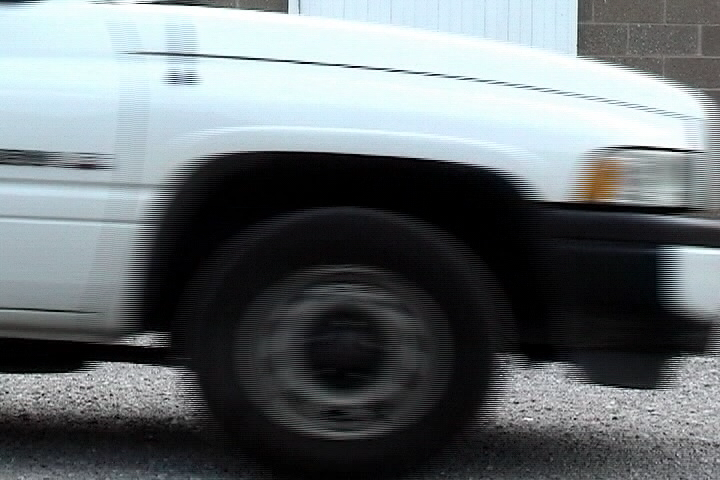
Source MPEG (interlaced)
Obviously this is an interlaced frame with lots of comb artifacts. The motion of the truck has caused a significant amount of motion blur.
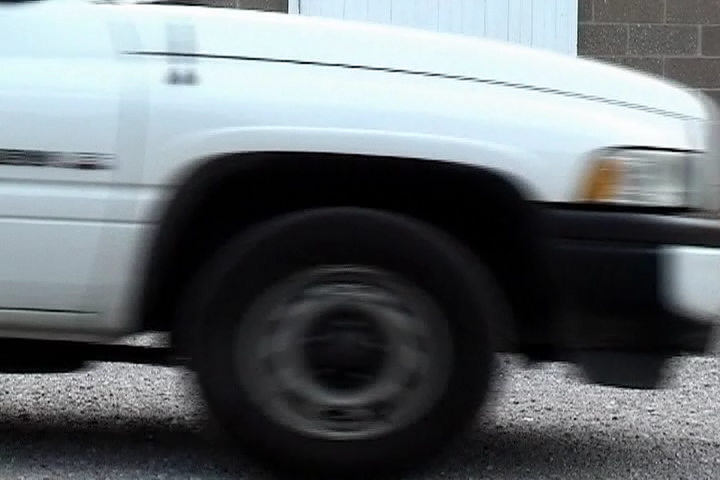
Blend deinterlaced:
AviSynth: Blur(0, 1).Sharpen(0, 0.7)
Blur(0, 1) blurs only on the vertical axis and removes comb artifacts. Sharpen helps restore some of the sharpness without restoring the comb lines. This type of deinterlace often looks like double exposures. The motion blur in this video hides this.
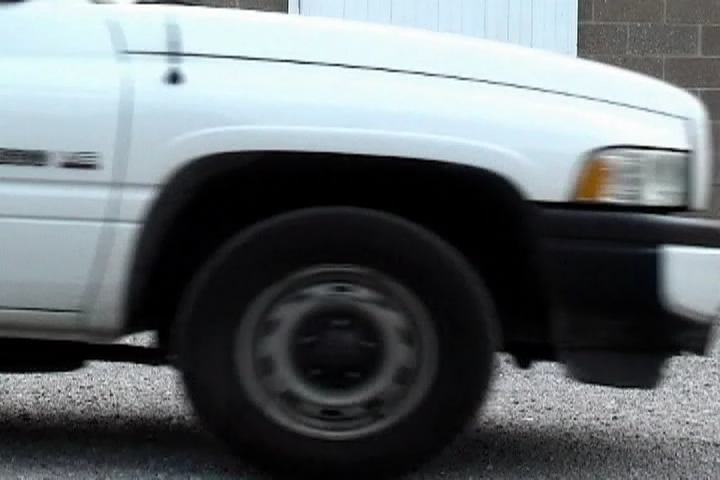
Discard and resize
AviSynth: SeparateFields().SelectEvery(2,0).BicubicResize(72 0, 480)
One field is thrown out and the missing scanlines are filled with data interpolated from the remaining field.

AviSynth: TDeint(mode=0, order=0)
A motion aware smart deinterlace.
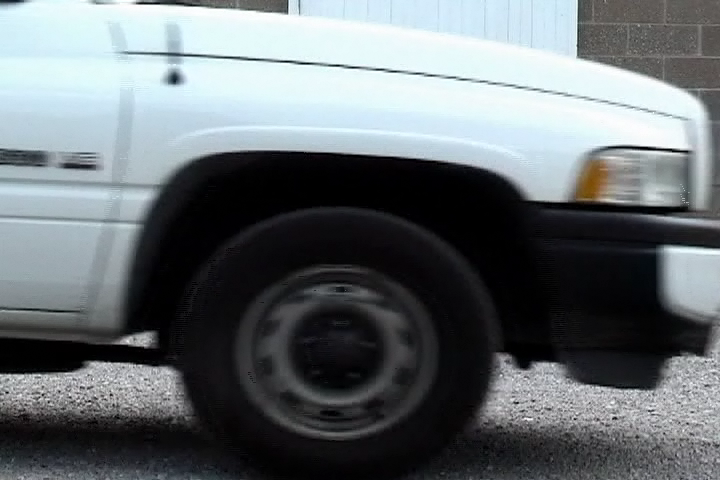
AviSynth: LeakKernelDeint(order=0)
Another motion aware smart deinterlace.
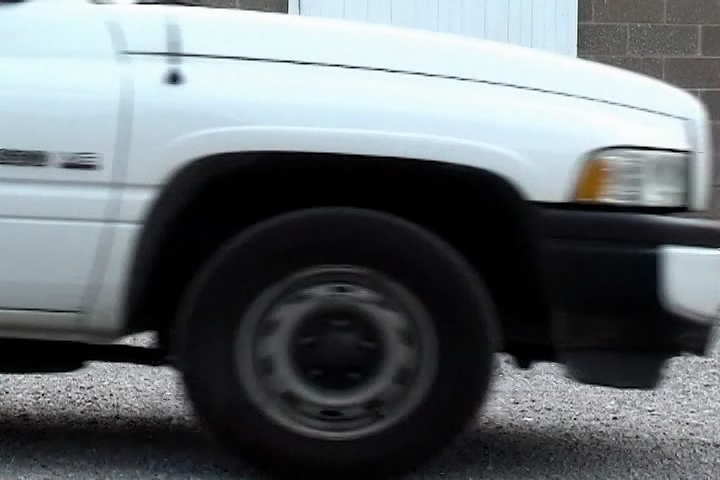
AviSynth: Yadif(mode=0, order=0)
Yet another motion aware smart deinterlace.
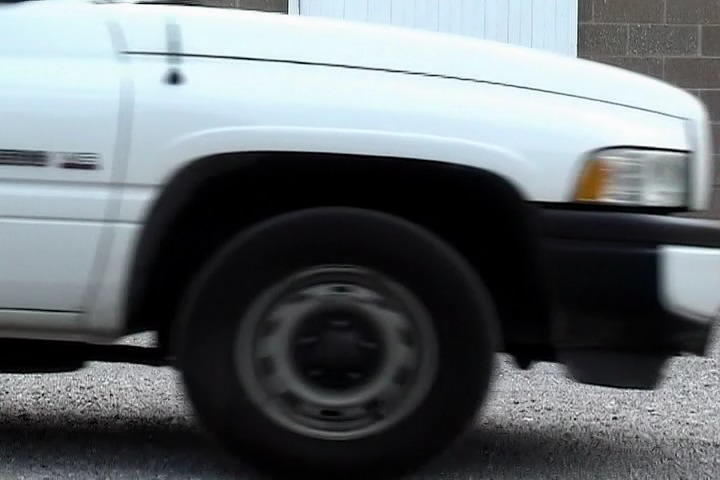
AviSynth: TempGaussMC_beta1().SelectEvery(2,0)
The slowest motion aware smart deinterlace I now of.
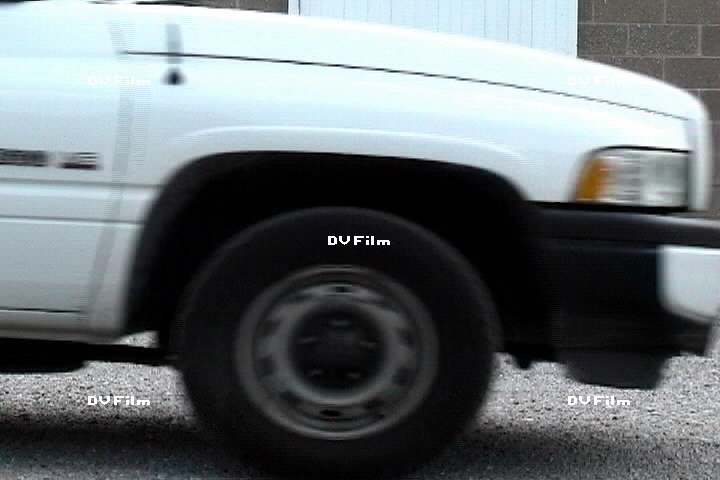
From DV Film Maker, provided by yahoobuckaroo
A motion sensitive smart deinterlace.
Note this video was somewhat screwed up. The program converted the 30i source to 24p then created 30p by duplicating every 4th frame, and finally saved in interlaced MPEG2 mode.
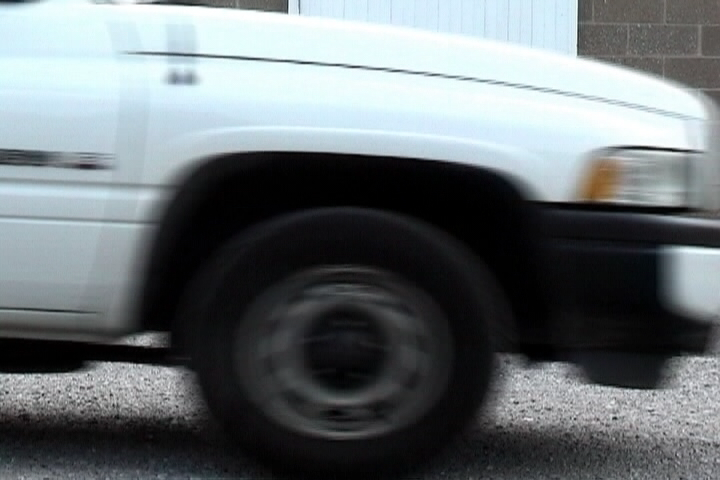
Deinterlaced by TMPGEnc, provided by yahoobuckaroo -
Good work. TempGaussMC kicks ass, doesn't it, if you don't mind waiting till forever for it to do its thing. Of the "normal" deinterlacers, it looked to me like Yadif does about the best job. Or maybe I'm just justifying my own use of it for both bobbing and deinterlacing, and someone else might prefer a different one.
-
Yeah, I'd put them in this order (best first):
TempGaussMC
Yadif
TDeint
LeakKernelDeint
DVFilm
Discard/Resize
Blur/Sharpen (blend)
TMPGEnc
Sometimes Blur/Sharpen or Discard/Resize are appropriate even though they are not the best in general. And, of course, I wouldn't deinterlace unless absolutely necessary (web distribution as WMV or FLV for example).
This video would have been even better if a faster shutter speed had been used (to sharpen up the vertical lines). -
A couple of things:
It was TMPGEnc that changed the Maker footage from 24P to 30P automatically. I used it for all the samples.
The sample I provided for the TMPGEnc deinterlacer was made using its most powerful deinterlacing mode "double" which gives the smoothest output for the video (that is, it removes the most stairstepping), but obviously its going to be the most blurred because of that.
And of course the motion will be more blurred at 24fps than at 30fps even when using film cameras, so there's no way you can change 60i to 24p without the motion blurr being worse. I think people are expecting way too much of programs like Maker and Magic Bullet when it comes to getting 24p from their cams. It's always going to be more blurred than the original because motion and blur are simply a big part of what makes film look like film. Having said that, blur still has a nicer quality to it coming from film.
Stills from a camcorder shot at 60i or 30p will always be more detailed than those coming from 24p cam. Stills from a 35mm film can maintain more detail simply because it has so much more information to work with. Its frame size is nearly twice as big as even 1080 hi-def, it has almost 4,000 lines of resolution compared to hi-defs 1080 lines let alone standard def's 480 lines, it has 20-bit color while hi-def has 10-bit and DV 8-bit, and its data rate is about 1 Gig compared to HDV/MiniDV's measly 25 MB.
Of course Maker will have the most motion blur of all the samples here--there's no way it can't. Its main claim, however, is that the stuff in the frame that isn't in motion will still look very good, and if you look at the gravel under the truck or the wall behind it, it does still look as good as all the other stills, at least I think it does. They all look very good in that regard, but to maintain that clarity while dropping and combining frames to arrive at 24p from 60i is impressive. To be honest though, I still think the footage I've seen from Magic Bullet looks a little better.
Thanks for grabbing the stills. -
Motion blur is a function of shutter speed vs the amount of motion, not the frame rate -- unless the frame rate is limiting the shutter speed. That is, you can't get motion blur with very high frame rates unless your subject is moving very very fast.Originally Posted by yahoobuckaroo
Yes you can. But the results would be jerky. No more jerky than 3:2 pulldown gets you with 24p sources though.Originally Posted by yahoobuckaroo
If you want 24p use a camcorder that shoots 24p. You won't have to deal with deinterlacing and blending issues.Originally Posted by yahoobuckaroo
If you want motion blur use a slow shutter speed. If you want clear crisp images use a fast shutter speed. This is where film has an advantage -- you can use fast or slow film to compensate for the shutter speed you want to use (digital cameras fake this with ISO settings but it's not really the same thing). And film is better able to accommodate a range of shutter speeds.
They may have more temporal resolution but the spacial resolution doesn't have to be different.Originally Posted by yahoobuckaroo
Obviously.Originally Posted by yahoobuckaroo
Not true. I'll post a 24 sample via TempGaussMC(). You'll see it's just as sharp as the still I posted above. Yadif(), TDeint() and LeakKernelDeint() would both be sharper too. One could always add blending if one wanted to simulate motion blur like Maker.Originally Posted by yahoobuckaroo
And the others were able to give much better results for the parts in motion.Originally Posted by yahoobuckaroo
I wasn't impressed at all. The parts in motion are full of artifacts. There is nothing special about what they are doing.Originally Posted by yahoobuckaroo
If anyone wants, I can make the videos available. I encodes as Xvid AVI for all the tests. I left the PAR 1:1 so viewing on a computer will get you 1:1 pixel mapping on-screen (as in the stills). -
Yes, you are correct. Don't know what I was thinking.
The only thing I disagree with is this: "I wasn't impressed at all. The parts in motion are full of artifacts."
You simply can't compare stills with a movie. No one would watch a movie that was run through Maker and say it looked "full of artifacts". Take a look at that video I posted the link to of that kid's movie earlier and tell me that looks herky-jerky or has lots of artifacts. It looks perfectly fine.
http://www.paullorenc.com/dinner%20time.html
In fact, I think it looks every bit as good as anything I've seen shot with a DVX100. If we pulled stills out of them obviously the DVX100 stills would look better, but when those frames are running at 24fps in front of your eyes you simply wouldn't notice any difference, or at least none worth mentioning.
For that matter, I hear people talk all the time about how bad miniDV or even HDV is compared to 16 or 35mm film, but I've been to several showings of movies shot on a DVX100 or XL2 (or XL1 at 50i PAL) spread out on a big screen at local Warrenberg Theatres that looked very impressive. The movie _November_ looked especially good. I would never have known it wasn't shot on at least 16mm film rather than a little DVX100. So despite all the rhetoric about how great film is or how bad DV is, you can get great results from either with a little work and by staying within the camera's constraints. Sitting here looking at stills isn't telling us much. -
Agreed. It's the difference between professional (or someone knowledgeable) who knows how to handle his equipment and an amateur who puts the camera on "auto".Originally Posted by yahoobuckaroo
-
I hear that argument all the time, and as amateur (or professional) video enthusiasts and encoders we are our own worst critics, and are more aware of possible problems with a video than would be the average Joe. While it's true that we might not spot the problems when watching a video at full speed, the fact remains that if there are artifacts the video won't play as smoothly or as clearly or as cleanly (choose your adverb depending on the kinds of artifacts) as it would if artifact free. I haven't looked at any of the samples, but it seems to me you're making excuses for this DVFilm Maker program. While we're not married to freeware here, it's often the case that there are freeware programs that do as good or better than payware for many things, and I think that's the case here. And, of course, the obvious answer if you want film is to use a film camera.You simply can't compare stills with a movie. No one would watch a movie that was run through Maker and say it looked "full of artifacts".
I saw the DVD of one important film that was shot on video and converted to film for theatrical showing. Then, unfortunately, they used the converted film version for the DVD. I'm sure they used way more expensive software to do the video to film conversion than what you have, and to my eyes it looked absolutely horrible, and was heavily artifacted whenever there was any movement. The film is David Lynch's Inland Empire shot using a Sony prosumer camera, the Sony DSR-PD150:
http://former.imdb.com/title/tt0460829/
But if it does what you want, and you are satisfied with the results, that's all that counts and who cares what we think? -
No, I'm not making excuses for Maker. It works fine. Again, take five minutes to watch one video made with it. The movement is good and is free of any visable artifacts aside from a little compression skewing the color because of the low bitrate for the web.
http://www.paullorenc.com/dinner%20time.html
What I'm saying is, if you have to bring a video or film to a complete stop so you can find an artifact in it, then it's not worth being concerned about, like the dust above my door frame. We have a rule about cleaning in this house: if we can't see it, it isn't there.
95% of the people I've come across on the internet discussing filmmaking are making stupid zombie movies that 100 people will see on YouTube or 30 people at a film festival. The last thing I'd want to encourage them to do is to go out and spend $4000 on a 24p video cam, or even rent a film cam (given the cost of having film developed) to get a film look when they can do just fine with their miniDV cam and something like Maker or Magic Bullet. If they get to the point where they're actually making good money with filmmaking, then they can move up to that other stuff. But that's very few people. Since Magic Bullet is very expensive and you need to already have After Effects to use it, then you're talking about nearly a $1,000 investment. DVFilm Maker is more sensible for most people at $150. Of course that's provided that they're using NTSC cams to begin with. Another solution is to buy a PAL cam and record at 50i, deinterlace in post to 25p and then just drop the frame rate to 24p (no one would notice the difference if you ran the video just one frame per second slower). But while you could view the PAL footage on your computer for editing, you couldn't run a line out to a NTSC TV set to monitor properly. (I don't know too many people who can afford a pro monitor). So now you're talkling about also buying a PAL TV or pro monitor. For people in countries with NTSC, I'd say it would be much more reasonable to just use the cam they already have and hit it with Maker. Is it as good as film? Or course not. But for the vast majority of people coming to this forum it's the best option. The $4,000 bucks you're suggesting they spend on a 24p cam will buy a lot of groceries or gas, neither of which will get cheaper anytime soon.
Another thing, I see people get bent out of shape all the time in forums like these over little things that not one person in the audience will ever concern themselves with. Color space/sampling for instance. Sure 4:4:4 has a lot more color/luminance available than miniDV's 4:1:1. But I've yet to meet a human that could tell the difference. It would make pulling a key during a green screen more difficult, but that's about it. People worry too damn much. With all the time they spend yapping about one little detail after another that no one else is going to even notice, the rest of us could be on our next movie already.
Similar Threads
-
Is Yahoo using more local news in its main news window?
By yoda313 in forum Off topicReplies: 3Last Post: 12th May 2010, 23:09 -
What's the 3D news?
By HotDamn! in forum ComputerReplies: 3Last Post: 7th Apr 2010, 17:55 -
DGDecodeNV - How good is the deinterlacing? Exemples?
By Gargalash in forum DVD RippingReplies: 10Last Post: 10th Feb 2010, 11:52 -
Does anyone know of a good deinterlacing Program
By jbandy1 in forum Video Streaming DownloadingReplies: 18Last Post: 16th Dec 2009, 12:50 -
Good News!!!!
By OzarkBaby in forum Newbie / General discussionsReplies: 4Last Post: 20th Dec 2007, 16:14




 Quote
Quote any suggestion for any deinterlacer??
any suggestion for any deinterlacer??